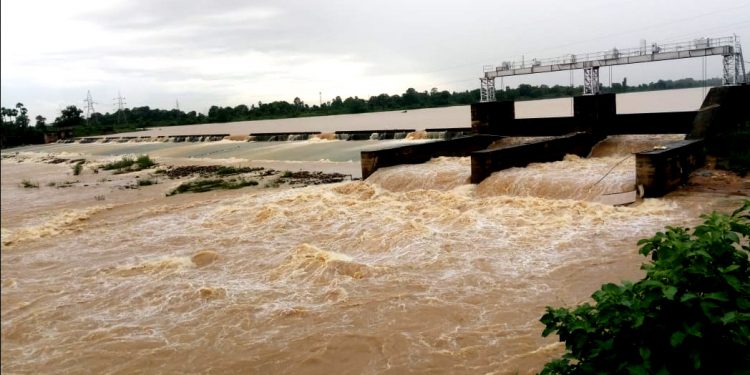Keonjhar: “We are at the twilight age, but have never seen in our youth river Baitarani in such a dry condition, even in rainy days,” lamented an elderly person of mineral-rich Keonjhar district.
Given the condition of the dry bed, they voiced concern that the river will not take many years to die a miserable death.
Reports said the rampant mining and pollution caused by it has narrowed its course at some places while its depth has been reduced.
Worse, excessive tapping of its water in the upstream areas by some mining and industrial companies has also left the river with little water downstream. This has become a cause of deep concern for people in the district.
It is said that companies like BRPL, Essar and PMPL have been drawing Baitarani water.
Conscious citizens and environment activists in the district noted that if the government does not go in for water conservation and curb exploitation of river water by companies, a hydroelectric project in the downstream area will be affected.
Baitarani is a lifeline for lakhs of people and agriculture in Keonjhar, Mayurbhanj, Bhadrak, Balasore, Jajpur and even for some districts in neighbouring Jharkhand.
The river has been nurturing agriculture, drinking water, fishery, forest and animals.
For the last few years, the flow of water in the river continues to be weak, resulting in shortage of water for agriculture and drinking needs in riparian pockets.
Some factors are responsible for the sorry state of the once-a-perennial river. Unchecked mining has caused deforestation in the district. Deforestation has spurred soil erosion in the forest. Soil and mud, mining and industrial waste find their way into the river, impacting its water flow and quality.
Water conservation for the river was thought of about 40 years ago. The Kanpur irrigation project has not been completed as yet. But companies have been drawing its water heavily, leaving it dry. There are 45 mines being operated in its basin areas, it is learnt.
Given such a situation, environmentalists sense an impending death for the river. They have demanded restrictions on the mining companies on use of river water, or else it will die soon like Saraswati.
The annual average rainfall in the district is 1,535 mm. According to a report, 7,296 million cubic metre of water flows through Baitarani annually. Of it, 1,206 million cubic metre of water is used annually for agriculture while 19 million cubic metres of water is used for drinking and industrial units exploit 439 million cubic metres of water.
“There is a need for a special plan for water conservation and to make it free of pollution. There is also a need for legislation on river water use for industrial units,” said environmentalist Dr Bimbadhar Behera.
Notably, Baitarani originates in Guptaganaga village in Gonasika and flows through Bansapal, Joda, Champua, Patina and Anandapur. After traversing nearly 360 km, it joins the Bay of Bengal at Dhamra in Chandbali of Bhdrak.
According to an estimate, over 4 crore people depend on the river directly and indirectly. The river nurtures kharif and rabi crops in 61, 920 acres in its basin areas.
It may be mentioned here that the MB Shah Commission, which had looked into the mining scam, had expressed concern over lack of waste management by industrial and mining companies.
PNN






































